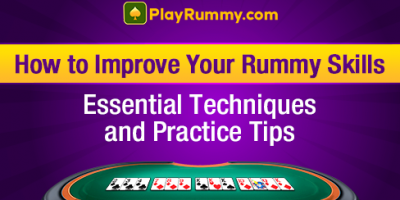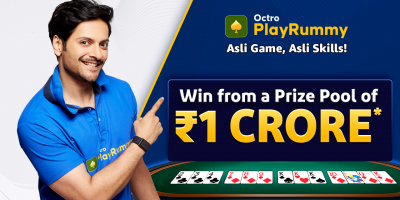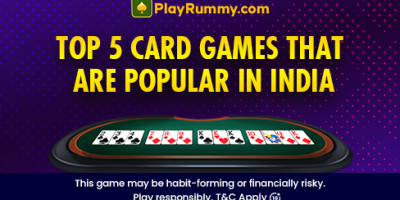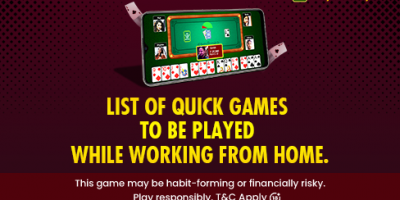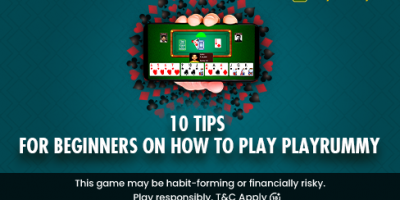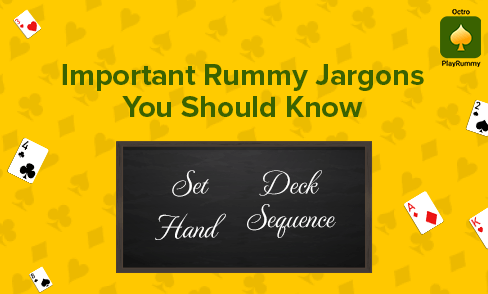
Every game has certain jargon that talks about aspects or features of that game. The same’s the case for the rummy game. Be it playing rummy online or offline these terminologies or glossaries are a must know for players who want to understand Indian rummy. Knowing these is like learning the language of the game. So here are some very important rummy terms.
Ace: Cards with ‘A’ printed on them. In a standard deck of 52 cards, you will have four aces of different suits.
Buy In: It is the amount of cash required to play a game that involves real cash.
Deck: It’s a pack of cards in a rummy game. Every deck has 52 cards, and these are vital for the game. Some rummy games are played with two decks of cards and some with only one.
Closed Deck: At the beginning of an Indian rummy game 13 cards are distributed. The pack of cards that’s undealt and is kept face down is known as a closed deck.
Open Deck: These are cards placed on the table facing up. The cards that a player discards lands in this pile, and hence it’s known as the open deck.
Deal: This is the process for distribution of cards to all the rummy players on the table.
Dealer: The cards in rummy are dealt to all the players in a rummy game by one of the players playing the game and this person is called a dealer. A dealer can be chosen anonymously or through a toss.
Declare: Once a player has finished forming sets and sequences in rummy, they can discard a card in the finish slot. This final step of the game is called declaring.
Draw & Discard: Placing a card facing up in the open deck. When a player selects a card from a deck, it is called ‘draw’. If a player has drawn a card, he/she must also ‘discard’ any card to the discarded pile.
Drop: If a player doesn’t like the cards, he has got and feels he will struggle to meld those quickly they can quit the game and this is known as dropping out of the game. In rummy online, players may drop out at the beginning or in the middle of the game and this has to be done before anyone else makes a valid declaration.
Rummy Hands: These are the cards that a player gets in a deal. While playing Rummy online with two, three, or four players, each player gets ten cards; when playing with five players, each player gets six cards. With more than five players, you must use two decks of cards and a hand of seven cards. The two-player game can also be played with seven cards each.
Joker: Be it online rummy or offline rummy the wild card joker may be selected randomly at the start of the game and the deck of cards may also contain the printed joker. It is an important card because it can be used as any card in the game.
Rummy Sequences: A sequence is formed when three or more consecutive cards of the same suit are aligned together. There are two kinds of rummy sequences . A player must have at least one pure and impure sequence to make a valid declaration after completing all the melds.
Pure Sequence: It’s a group of three or more cards of the same suit, arranged in consecutive order. To form this Joker or wild card can’t be used.
Impure sequence: This sequence contains a joker. If a player is short on cards, a joker can be used here.
First life: This the first pure sequence in rummy to make a valid declaration. A player must have a minimum of two sequences, out of which the first one has to be a pure sequence, and this goal/target is said to be first life.
Second life: For a valid declaration, a player’s second mandatory sequence can be a pure or impure. This process of completing the second run/sequence is referred to as second life.
Rummy Sets: Cards with the same rank but not the same suit are formed to make sets. They may contain jokers that are usually a group of three or four cards. For example, 7 hearts, 7 diamonds and 7 spades make a set.
Score: A total of all card points that are no longer a part of any sequence or set is a player’s score. The score for all picture cards (including Ace) is 10 points, while joker is of 0 points, and all the remaining cards carry points equivalent to their numerical value.
Top Card: The card which is at the top of the closed deck is called top card and is also known as face down.
Up Card: The card at the top of the discard or open deck is called up card and is also known as face up.
Rummy Variants: There are three main types of rummy game modes in Indian rummy which are called rummy variants. These being points rummy, pool rummy, and deals rummy.

